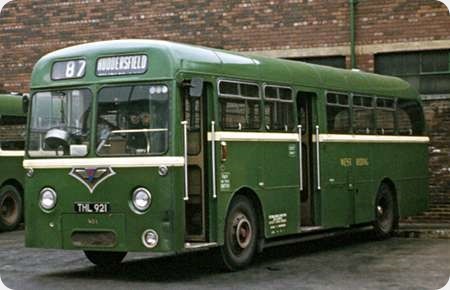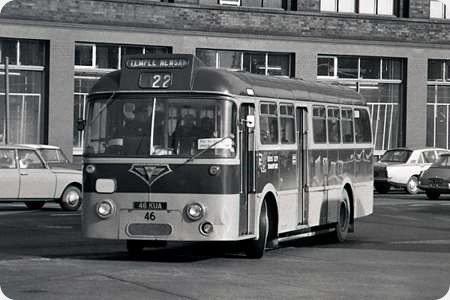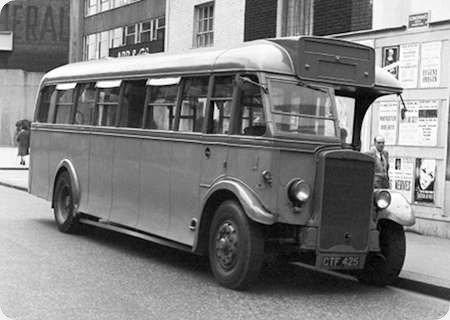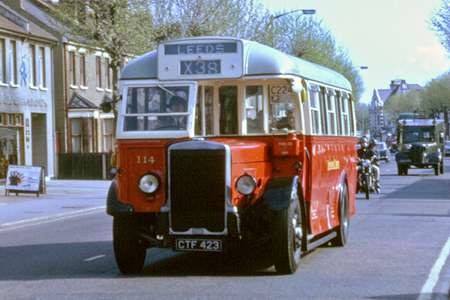West Riding – AEC Reliance – THL 921 – 921
West Riding Automobile
1961
AEC Reliance 2MU3RV
Roe B41D
In 1956 West Riding turned to the AEC Reliance for its limited bus saloon requirements, taking twelve with Roe B44F bodies characterised by a ‘droopy’ lower line to the windscreen. www.old-bus-photos.co.uk/
The Reliance then became the choice for the coach fleet with Roe C41C bodies, and in 1961 twelve of the 2MU3RV chassis type arrived carrying Roe B41D bodywork of which THL 921, fleet number 921 is an example. No more Reliances were purchased before West Riding sold out to the National Bus Company in 1967. This picture was taken in April 1970 before the corporate dead hand of Freddie Wood fell in 1972, after which the poppy red livery was inflicted upon West Riding.
Photograph and Copy contributed by Roger Cox
18/05/20 – 06:38
A stylish yet functional design enhanced by a smart livery. More attractive than the standard (Alexander in the cases of PMT and Trent) BET version of the time.
Ian Wild
17/06/20 – 07:19
These dual bodied Roe bodied Reliance saloons felt very solid indeed. They lasted until 1973 when they were ousted by new Leyland Nationals. None of the batch was repainted into National Bus Company red, and these along with the elderly Guy ArabIV of 1957 vintage stood out from the mainly repainted fleet by early 1973. They were probably the last traditional green single deckers in service.
MarkyB
18/06/20 – 06:45
I was recounting, only last week, to a friend retired from the industry that C H Roe were among the coachbuilding greats and, against a general trend and tide, retained a composite structure which produced high quality bodies of a generally attractive appearance; robust, well built and well finished. These, and the traditional deckers, were among the best bodies available (in every sense). Following in Crossley’s footsteps, the introduction of PRV frames (particular on the Atlantean and similar bodies on various front engined chassis) brought the nadir of Roe bodywork. They were ugly in the extreme and time revealed them also to be rot boxes. They did solve these problems – but not in the OBP era.
David Oldfield
03/05/21 – 07:19
A snippet of information for fans of the AEC Reliance. A 1961 AEC Reliance (WKG 287, the last of a sequence number-plated WKG 276-287) was still in daily service with Henley’s of Abertillery, Wales in the 1990s, making it the oldest service vehicle still in daily use on a public route.
Julian Meek
Quick links to the - Comments Page - Contact Page - Home Page




